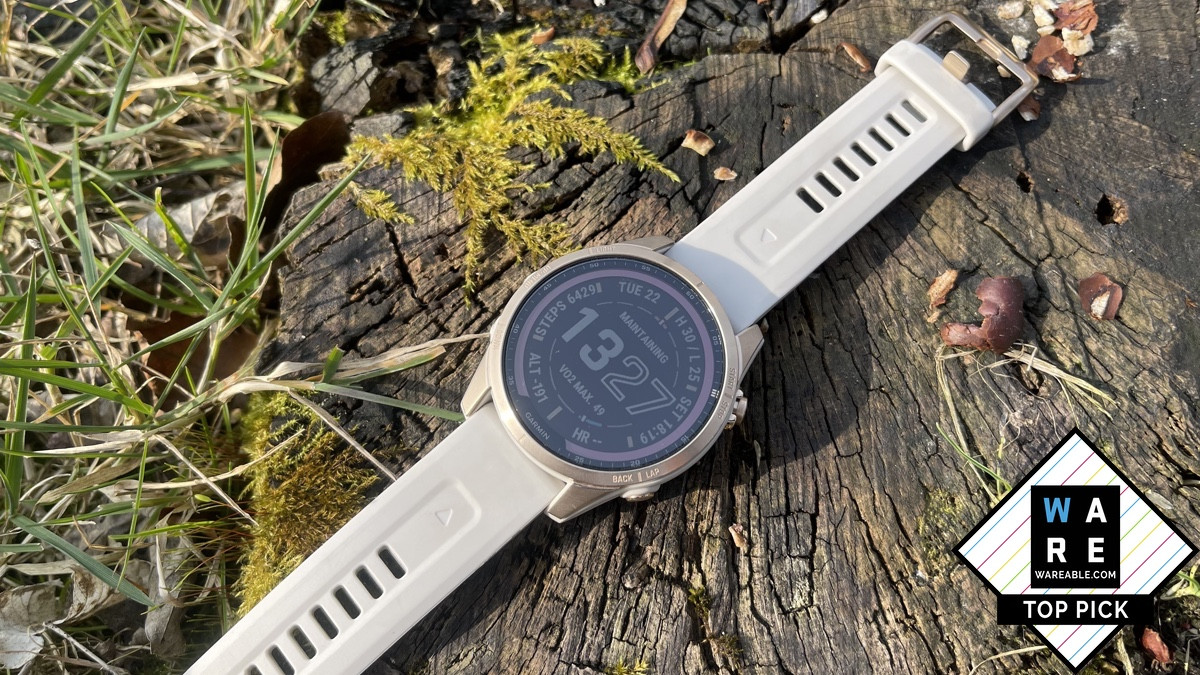
- Looks great and so comfortable to wear
- Long battery
- Excellent fitness features
- Screen is still washed out
- Wellness features feel undercooked
- Mapping is fiddly and has some key usability issues
The 42mm Fenix 7S might be the baby of the flagship outdoor watch range – but it still packs a punch.
With over 30 hours of GPS battery life and around two weeks as a smartwatch, plus Garmin’s full array of sports profiles, fitness metrics, and on-wrist mapping, it’s one of the best outdoor and fitness watches in its own right.
We’ve spent weeks with the Fenix 7S to find out how it performs, and crucially, how it compares to the rest of the Fenix 7 range.
Here's our in-depth review.
Fenix 7 range compared
The Fenix range consists of the Fenix 7, 7S, and 7X.
The Fenix 7S comes in a standard version, Solar (which adds battery life) and there's a Sapphire Solar version with a tougher screen, solar power, and a few extra features such as Garmin Pay.
For the first time, the Fenix 7S is the same price as the standard 47mm Fenix 7 – so there's no cost saving by opting for the smaller version.
- Fenix 7S: $699/£599
- Fenix 7S Solar: $799/£689
- Fenix 7S Sapphire Solar: $899/£779
- Fenix 7: $699/£599
- Fenix 7 Solar: $799/£689
- Fenix 7 Sapphire Solar: $899/£779
- Fenix 7X Solar: $899/£799
- Fenix 7X Sapphire Solar: $999 and £1,049
You can, of course, opt for an older Fenix 6S to save money.
Fenix 7S and Fenix 7 – the key differences*
| *Standard versions | Fenix 7S | Fenix 7 |
| Case size | 42mm | 47mm |
| Dimensions | 42 x 42 x 14.1 mm | 47 x 47 x 14.5 mm |
| Weight (with silicone strap) | 63g | 79g |
| GPS battery life (All Systems) | 24 hours | 40 hours |
| Smartwatch battery life | 11 days | 18 days |
Design and comfort
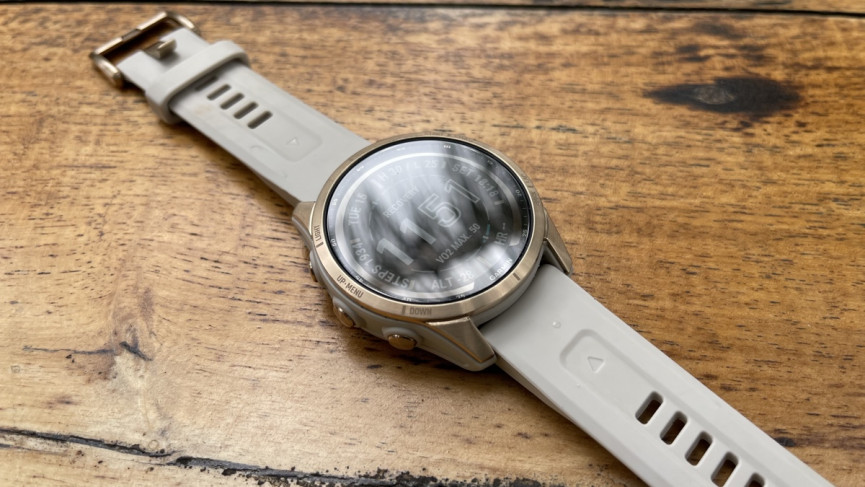
The Fenix 7S is the smallest of the range, with a 42mm case that’s much better suited to smaller wrists. There are precious few devices that can compete with the Fenix 7 range in terms of tracking prowess, and even fewer at such a manageable 42mm size. It stands alone – and that's what makes the Fenix 7S so easy to recommend.
This will be touted as the female-friendly Fenix, but we know many men who have opted for the smaller Fenix 7S for comfort.
Just because it’s a smaller case size, doesn’t mean it’s thinner. The Fenix 7S is still a chunk, with a thick 14mm case that sticks up on the wrist. However, we found it comfortable to wear and doesn’t encroach onto the back of the hand, whereas larger Garmins can.
We tested the titanium Solar Sapphire version which weighs 58g with a silicone strap – but the standard version only weighs slightly more at 63g.
The Fenix 7S uses an interchangeable 20mm silicone strap, with a secure buckle that provides a reliable tight fit.
The screen isn’t as punchy or bright as an AMOLED-toting Garmin Epix or Venu 2 – and colors are used so sparingly that it’s almost monochrome. The screen is a 240 x 240 MIP display, so it won't win awards for clarity or punchiness. And it can look quite washed out.
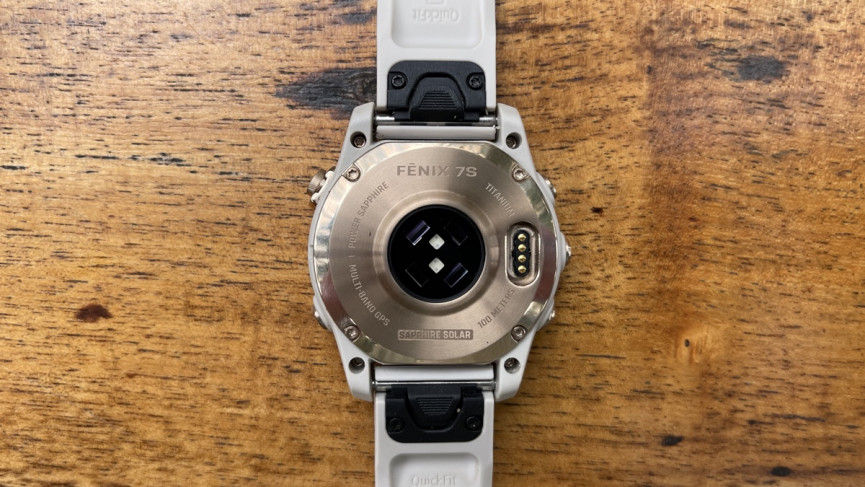
The screen is backlit, and this will fire automatically with a wrist raise, or you can manually use the top-left button positioned at 10 o'clock.
Like the rest of the Fenix range, the 7S is now touchscreen – which is good news. It’s natural to touch the screen of a smartwatch, and we’re sure new Fenix 7 users will take to it warmly. The screen is responsive and the animations are quick – but as dinosaurs that have been using Fenix watches for nearly a decade, it took a long time to get used to.
Thankfully for us Luddites, the five-button array is still in full force – so you can cut about as normal if you want to.
There’s a host of colors available, and we tested a natty light sand (off-white)/rose gold option, which is a nice break from the blackness of the previous Fenix.
The visual aspects of the operating system and experience are far better on the Fenix 7S than predecessors – and post-run workout data is much nicer to dive into on the watch itself.
Sports tracking
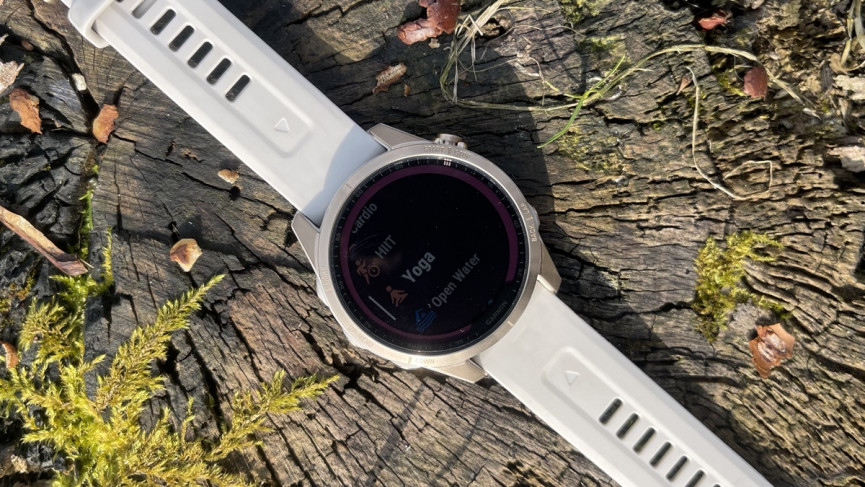
The Fenix 7S is a sport-tracking powerhouse and one that’s designed as a one-stop shop for Garmin’s workout profiles.
Running (of all types and forms), cycling, hiking, swimming, triathlon, and HIIT are the core staples, but you can add golf, yoga, elliptical, parachuting, surfing, skiing, and winter sports. It’s an exhaustive list, and most modes offer something unique beyond just time/heart rate.
Yoga, for example, will track breath per minute and its effect on your stress score.
Cycling has been upgraded with Grit and Flow metrics for measuring the efficiency of descents, and the swim tracking is excellent – as it has been across Garmin devices.
Rest assured that for the eye-watering cost of the Fenix, you’re getting max value in terms of sports tracked.
Running testing
With a full complement of VO2 Max and performance analytics, Fenix 7S is still a natural home for runners. And with longevity the name of the game, it’s distance runners that will get the most value.
We’ll come on to battery life, but you get 37 hours of GPS – and 26 hours if you tap into the multi-band GNSS ‘All Systems’ mode, which we’ve found offers significantly improved performance in built-up areas.
In terms of data, there’s the usual tracking of distance/pace/time – but after a run things get even more impressive. VO2 Max, training effect, analysis of weekly training load, and recovery time have long been stalwarts of the Fenix experience.
That has now filtered down the range, and you can find these on the Instinct 2 at a lower price tag – but still make the Fenix a powerful watch.
You will also get data such as estimated sweat loss, cadence, calories, and time spent in heart rate zones.
What’s more, Garmin plays nicely with third parties, and you can have data shared to platforms such as Strava if you wish. Likewise, Strava users can see Live Segments on the wrist, too.
PacePro is present – as it is on the cheaper Forerunner 245 – which enables you to upload routes and have the Fenix 7S guide you to a target time, accounting for hills and terrain – telling you when to back off and when to push.
You can do this by uploading a simple distance and target time, for the Fenix to work out your splits. Or you can upload a route via GPX, and have PacePro analyze it. You can then have the watch guide you to keep you on pace, rather than passively record your performance – which can be a great tool for PB hunters.
Just as interesting is the stamina tracking – although we’d suggest there’s some work to be done in this area.
The ambitious concept provides detail on potential and actual stamina during runs.
Actual stamina indicates how much you energy you have in the tank at the current pace.
Potential stamina works out how much longer you can go if you slow things down.
If you’re worried about making it to the end of a run, and you regularly go too hard (or too conservatively) there are potential benefits here – but the use cases don’t seem as well defined as PacePro – and we feel Stamina is still something of a work in progress.
Heart rate accuracy
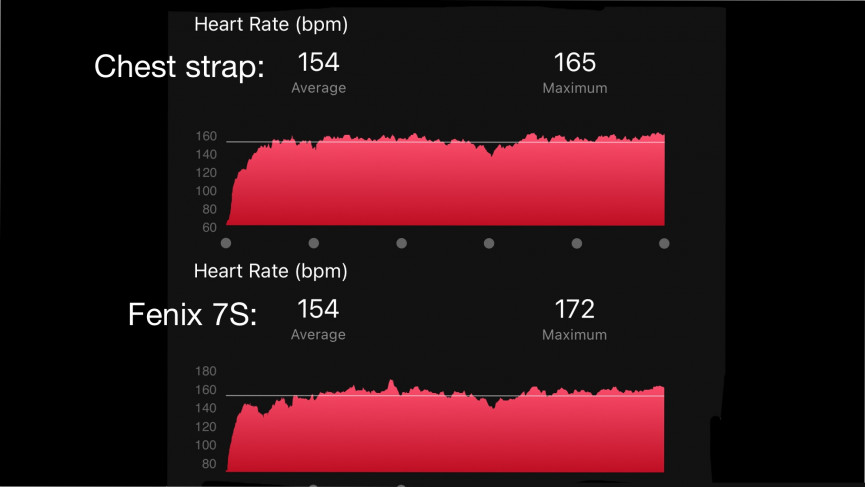
Chest strap (top) and Fenix 7S (bottom)
We put the Fenix 7S up against a Garmin HRM-Pro chest strap – and enjoyed an excellent experience during steady runs.
Over a 40-minute steady run, the two produced identical average heart rate readings, although the optical sensor on the Fenix 7S did report a slightly higher peak HR for the session.
Monitoring the two side-by-side during the workout in real-time, the optical sensor followed the chest strap pretty much identically – albeit with a slight lag.
That’s par for the course with optical HR sensors. And if you push the Fenix 7S to the max with lots of rapid movement, jumping about, and huge peaks and falls of heart rate, it will struggle. But runners and cyclists can with an eye on heart rate can rely on the Fenix 7S – and others can always hook it up to an external chest strap for better data.
Overall, we were pleased with the performance of the Garmin Elevate 4 sensor here – and would have no hesitation recommending it for runners and cyclists.
Wellness and fitness tracking
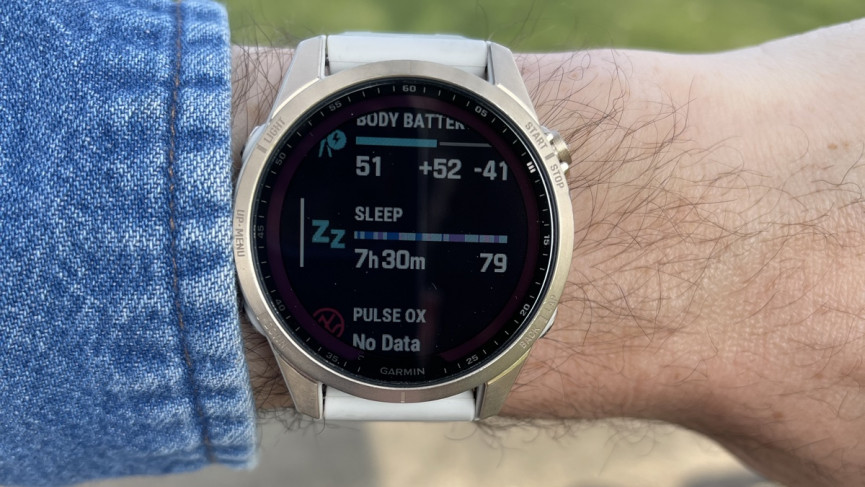
Health and wellness are now a core part of the Fenix experience – and you get the same set of features here as most of the Garmin range. That’s not just Fenix, and this feature set is ubiquitous across most price categories.
Steps, movement, and heart rate (24/7, resting and during exercise) are the first level – the core features. We tested these extensively and found the data to tally with other devices – with resting heart rate checking out against a mental test and other rival devices.
Then comes the trifecta of stress tracking, Body Battery, and sleep monitoring – which is the more cutting-edge part of Garmin’s wellness features.
Body Battery and stress tracking
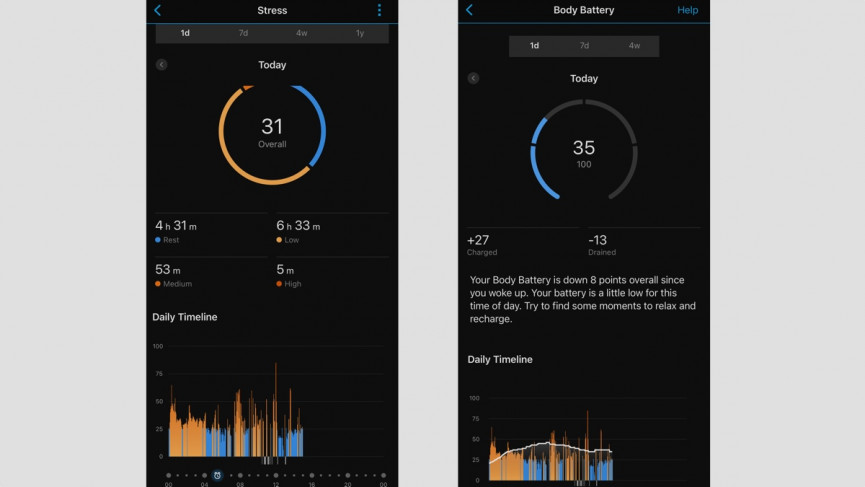
Stress tracking is an interesting feature, and is more a score of physiological stressors (tiredness, over-training, illness, etc) than feelings – although we did see a correlation with the latter.
Overwhelming days did produce higher readings in Garmin Connect. We also saw big spikes in stress while ill – so it’s worth keeping an eye on.
However, we feel the implementation could be improved. Stress tracking on Garmin feels peripheral to the experience and is easy to miss or ignore. Every day felt the same – and that was reflected in our stats. Over a 7-day period where we were on holiday relaxing, traveling long haul, and recovering from jet lag, there was no discernible change in stress levels day-to-day. Looking back, it seems like any other working week.
What’s more, there’s nothing actionable about the Stress Score. Ultimately, if you’re interested in stress tracking then there’s some good data here to work with – but it’s up to you how to interpret it.
The same goes for Body Battery. On days we felt tired, we did see lower Body Battery scores. And we saw a strong correlation between good/bad Body Battery scores and Daily Readiness percentages on our Whoop 4.0. So clearly there are these scores are grounded in science.
But again it's the implementation that feels undercooked.
While Whoop's low scores flash up in red, and it's clear to see that we should be taking a rest day, Garmin's Body Battery scores are posted without comment, amid a stack of widgets. It's easy to miss, and Garmin doesn't put much emphasis on the data.
That’s in comparison to bands like Whoop, Oura, and Fitbit, which are making the idea of readiness much more of a core metric. And given how important readiness is for athletes, it’s a shame it’s not more prominent with the Fenix.
Sleep tracking
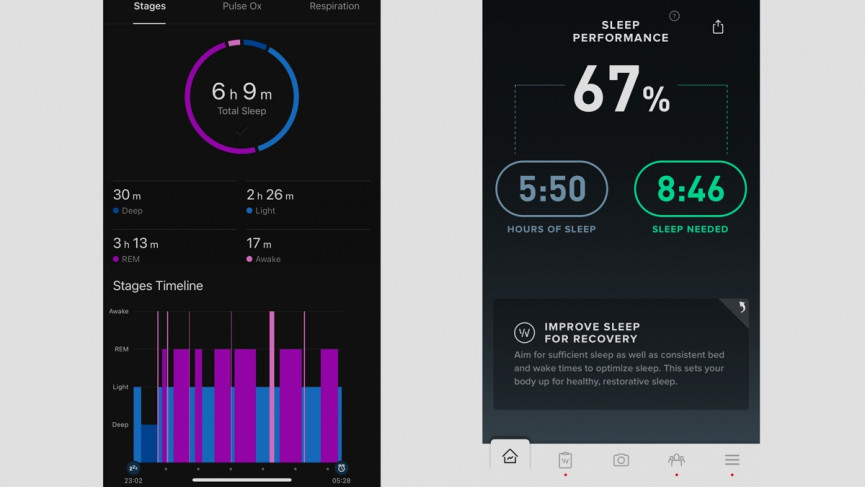
Fenix 7S (left) and Whoop 4.0 (right)
Sleep tracking is a big part of the Garmin experience, and this data will inform things like Garmin’s workout recommendations, and the Body Battery data.
You can have a breakdown of your sleep and sleep stages – and each night's sleep will be scored out of 100.
We compared sleep tracking with Whoop 4.0, which we’ve found to be a reliable sleep tracker. Most sleep duration figures were in the ballpark, although we found a slight overestimation with Garmin generally – sometimes reporting up to an hour more sleep.
We also found that recorded deep sleep could often be extremely low – and that a restless night can result in some absurdly low sleep scores that don't seem helpful. We had a 6-hour sleep and were awarded a 29/100 sleep score. We managed to get a 49/100 sleep score grabbing 4 hours of sleep on a plane.
And in a record-breaking 8hr 30 sleep, the Fenix 7S reported just 11 minutes of deep sleep.
Another frustrating quirk of Garmin’s sleep tracking is how long it takes to offer you any data. We like to check sleep scores within 30 mins of waking up (if not sooner) – but the Fenix can take over an hour to show sleep data on the wrist.
In short, we think Garmin's sleep tracking – and whole wellness offering – could do with an overhaul.
Mapping and navigation
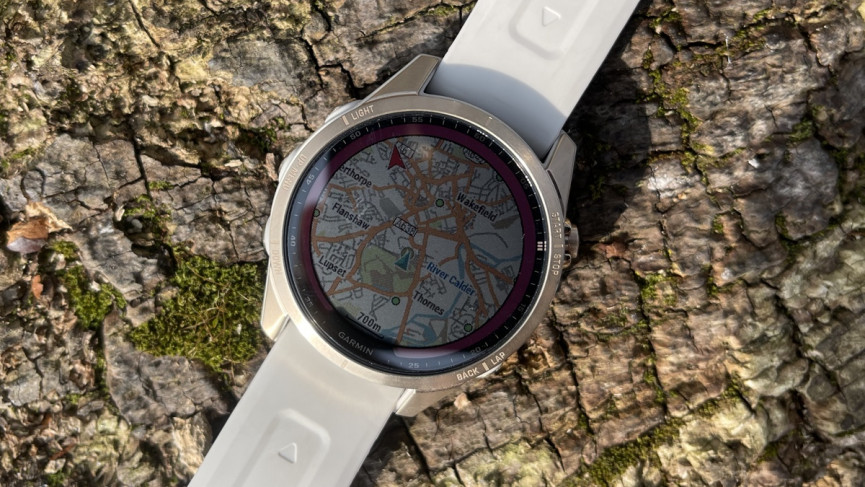
With so many of the best Fenix features filtering down the line to Garmins such as the Venu 2 or Instinct 2 – mapping remains a unique selling point of the range.
On the Fenix 7S, the smaller screen does conspire to make this feel even less user-friendly than the larger Fenix 7 and 7X – and let’s be honest, it’s already a fiddle.
The maps themselves offer a decent overview of what’s around you – especially in a built-up area. In remote areas, there’s not so much detail.
You can also pull up points of interest and navigate to them – but this is where the experience does fall. It’s fiddly, but once you get the hang of the system of scrolling around segments of the map, it’s usable. The problem is that the mapping and points of interest aren’t that useful.
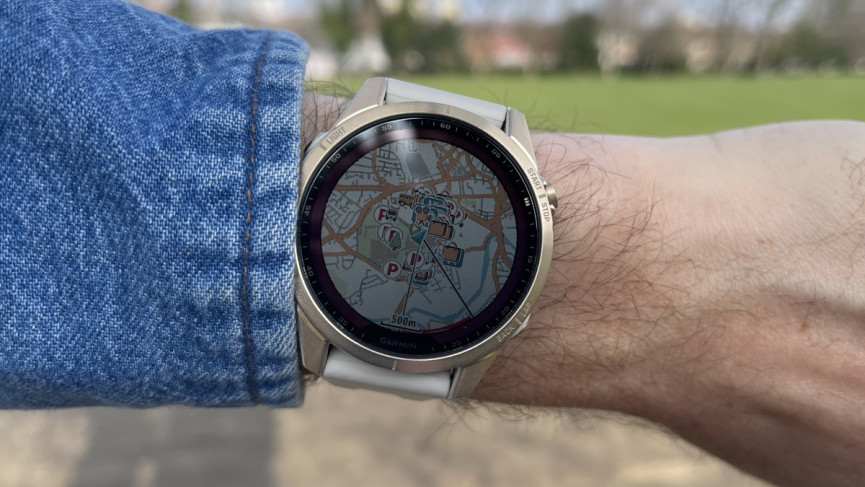
We tried a practical experiment to navigate to the train station – something hikers might want to do. Sadly, all stations and bus stops were ambiguously labeled “Ground Transportation” – which isn’t helpful.
It’s not all bad. We could find individual shops and even pubs – and all this works without a cell signal, which is useful when you’re in the back of beyond.
Away from mapping, you can add GPX routes to the watch and follow waypoints, which is great for pre-planned adventures, and useful once the trails get faint.
Smartwatch features
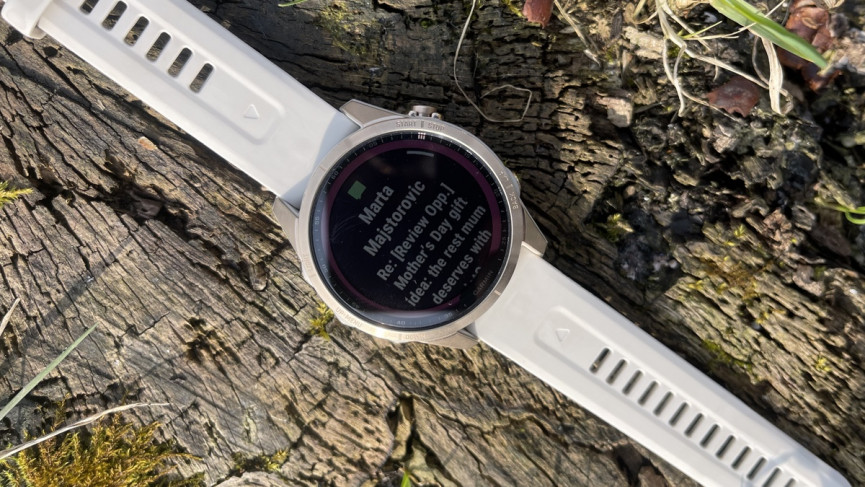
Garmin watches are pretty complete smartwatches – and there are plenty of smartphone integrations to make the Fenix 7S more useful when you're not getting sweaty.
The added touchscreen functionality elevates features like music controls and expanding notifications.
Android users can enjoy customized or default responses, which iOS users won't get.
The notification support for us worked just fine. They're well optimized to the screen and it's easy to dismiss them as well when you're done reading them. And you can also have them muted when exercising if you desire.
The only issue, from our experience with the Fenix 7S, is a lack of customization of what pings your wrist, and it's not possible to select between different apps. We found the number of notifications a little overwhelming and found it easier to turn them off. You can always stem the flow at source, although snoozing notifications from your paired smartphone isn't enough – and they'll still ping your wrist.
There's a built-in music player with a portion of the 32GB of storage on the 7 offering room for up to 2,000 songs. There's also offline playlist support for premium-level Spotify, Deezer, or Amazon Music.
You also get Garmin Pay, which isn't as slick as Apple Pay and is still missing key banks – but is a great addition for your wrist, when you can pay for a drink in a long run.
You do of course have access to Connect IQ Store, which still pales in comparison with the Apple App Store and even the Google Play Store for what you can download, how you get downloaded apps, watch faces, data fields, and widgets onto the watch.
Is the Fenix 7 a perfect smartwatch? It's not giving the Apple Watch too many sleepless nights and the whole experience can feel a little labored and clunky. But it covers most features you'd want from a smartwatch, which makes it a more useful everyday wearable.
Battery life and GPS accuracy
We tested the Garmin Fenix 7 Sapphire Solar, so our scores benefited from time in direct sunlight.
Generally, as a smartwatch, we found about a 5% drop off per day in sunny climates – which equates to around 20 days with plenty of solar assistance. In general use in the wintery UK was closer to 11 or 12 days.
An hour of GPS tracking using All Systems GNSS knocked off about 4% off the battery total – again extrapolating out close to Garmin’s promised 26 hours.
There’s a host of battery-saving modes, and you can switch to standard GPS (37 hours) or Max Battery GPS (90 hours), but each will reduce accuracy.
In terms of GPS accuracy, we found the Fenix 7S to enjoy better accuracy and less wandering than older Fenix devices – especially in built-up areas.
We tested it on measured routes at Park Run events, and on longer runs of 1-2 hours – and it was a consistent performer.
Trees are still the kryptonite of GNSS – but overall the Fenix 7S will produce more accurate tracked workouts.
How we test
